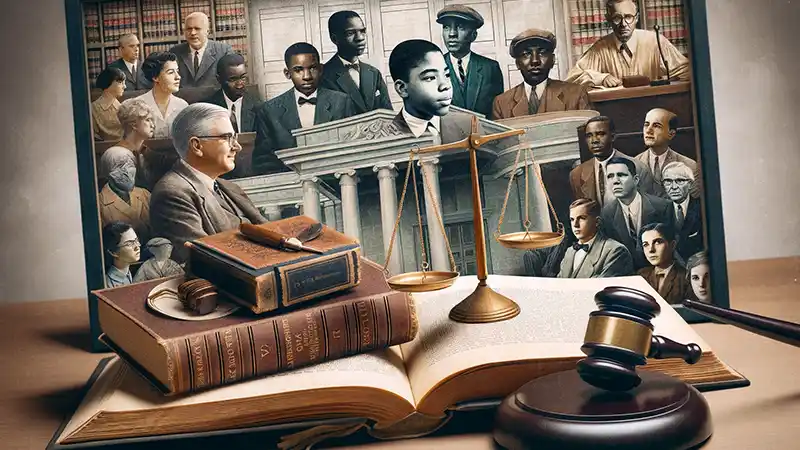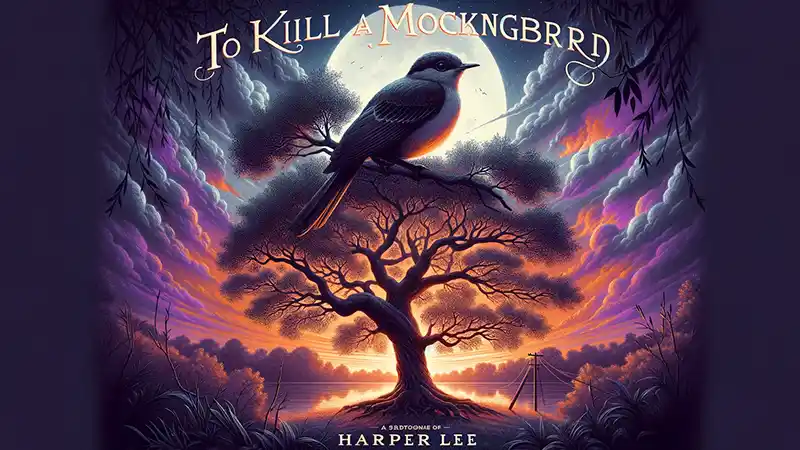In this lesson plan, we look at the profound themes of justice, racial prejudice, and moral integrity, as explored in Chapter 16 of To Kill a Mockingbird, and the historically significant Scottsboro Boys case. This lesson aims to foster critical thinking and empathy in students by juxtaposing the fictional trial of Tom Robinson with the real-life legal travesty that befell the Scottsboro Boys in 1930s America. The questions provided for both the chapter and the Scottsboro Boys activity are carefully crafted to guide students in a thoughtful exploration of the complexities of these cases, the societal undercurrents they expose, and their enduring relevance. This approach not only enhances students’ comprehension of the novel’s narrative and themes but also encourages them to scrutinize the intricate interplay between literature and historical context, thereby deepening their understanding of the pervasive issues of racial injustice and the ongoing struggle for equality and fairness in the justice system.
Learning Goals
- I will be able to analyze the parallels and contrasts between the fictional trial of Tom Robinson in To Kill a Mockingbird and the historical Scottsboro Boys case.
- I will be able to evaluate the role and impact of organizations like the ACLU and individuals such as Hollace Ransdell in the Scottsboro Boys case.
- I will be able to examine and discuss the concept of ‘blind spots’ in societal attitudes towards race, as depicted in To Kill a Mockingbird and exemplified by the Scottsboro Boys case
Materials
Process
- Read through the Scottsboro Boys worksheet with the students.
- Direct students to the Scottsboro Boys information page.
- Have students fill in the handout.
- Introduce the Chapter 16 questions for To Kill a Mockingbird.
- Read Chapter 16 of To Kill a Mockingbird.
- Answer the questions in the Chapter 16 handout.
Scottsboro Boys Questions
- What was the main focus of the ACLU’s “Black Justice” report released in 1931?
- What were the Scottsboro Boys accused of, and how did this case highlight the failings of the justice system in the South?
- What was the reaction of the South to the Scottsboro case initially, as described by Paul Peters in 1932?
- How quickly did the case against the Scottsboro Boys move from arrest to trial?
- What was the basis of the indictment against the Scottsboro Boys?
- Who were Ruby Bates and Victoria Price, and what role did they play in the Scottsboro case?
- What were the initial convictions and sentences for the Scottsboro Boys?
- How did the ACLU become involved in the Scottsboro case, and who was Hollace Ransdell?
- What contradictions did Ransdell find in the testimonies of Victoria Price and Ruby Bates?
- What significant contributions did lawyers like Walter Pollak and Clarence Darrow make to the case?
- What were the outcomes of the various appeals and retrials in the Scottsboro case?
- What was the final resolution for the Scottsboro Boys, and how did it reflect on the justice system of the time?
Chapter 16 Questions
- What “subtle change” does Scout notice in Atticus at the beginning of this chapter?
- What other evidence in this chapter supports her observation?
- When Scout asks if the Cunninghams are still their friends, Atticus responds, “Mr. Cunningham’s basically a good man, he just has his blind spots like the rest of us.” What does Atticus mean by “blind spot?”
- Do you agree with Atticus’s assessment of the Cunninghams?
- Does the setting in which this story takes place make Mr. Cunningham’s “blind spot” understandable? Explain.
- Why do you think the trial draws so much interest from the people of Maycomb?
- What do we learn about Mr. Dolphus Raymond in this chapter?
- What is a “mixed child,” according to Jem? Why does he think they are “real sad”? Whose universe of obligation do they belong to?
- What does Scout learn about Atticus and Tom Robinson that she did not know before? What is confusing to her about the revelation?
- Why, exactly, are so many townsfolk upset at Atticus?



